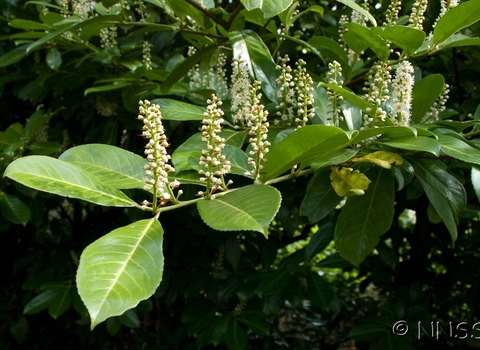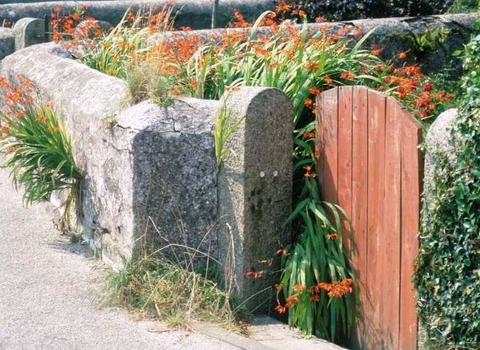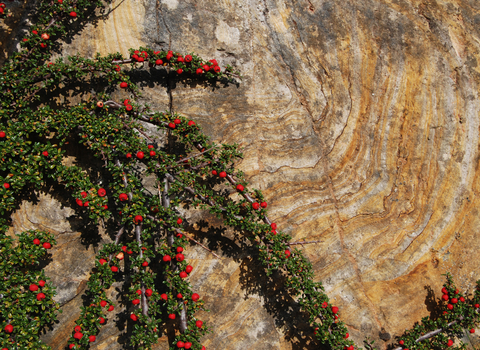Watch our feature
You can watch us on 'Garddio a Mwy' on S4C below.
WildNet - Tom Marshall
You can watch us on 'Garddio a Mwy' on S4C below.
Tomos - Garddio a Mwy (https://youtu.be/T-pdSuBcH9k)
Credit: Garddio a Mwy, S4C
You can watch the full program on BBC iPlayer here.
You can also find out more about invasive species and the role gardeners can play in stopping their spread below.
The term ‘invasive’ describes species, such as plants or animals, that threaten biodiversity. They’ve been introduced by humans to parts of the world where they wouldn’t naturally be found. For example, ornamental plants have been introduced to delight gardeners for centuries.
There are approximately 81,000 different plants available to buy in Britain
Most of these are confined to our gardens, but others have managed to escape. In fact, around half of our flora in Britain has been introduced from elsewhere in the world.
Of those ornamentals which have escaped gardens, only a few have (so far) proved to be invasive. These invasive species are one of the ‘top five’ threats to biodiversity globally. They impact the environment, the economy, our health and the way we live.

Direct drivers of change in nature with the largest global impact (IPBES Global Assessment) ©NWWT
Many invasive species were originally introduced as ornamentals for gardeners. That’s why gardeners have such an important role to play in tackling this threat.

Cherry laurel (Prunus laurocerasus) ©GBNNSS
Cherry laurel was introduced to Britain by 1886 and is now a common hedging choice because of its beautiful glossy leaves. Yet it can escape gardens by setting seed and spreading into woodlands. Here it can be invasive, and as an evergreen shrub creates dense shade to the detriment of native woodland plants.

Montbretia (Crocosmia × crocosmiiflora) ©Trevor Renals
Montbretia was introduced to gardens in 1880. It escaped from gardens and was first recorded in the wild in 1911 and has since spread rapidly across the UK. Montbretia tends to spread and form large clumps which can be the result of it being dumped in the wild.

Cotoneaster © Lin Cummins
Cotoneasters was brought to the UK in the 19th century as a garden plant, it has now been identified as one of the top ten species to negatively impact protected sites in Wales. The berries are easily dispersed by birds causing cotoneaster to progressively spread. Both Montbretia and Cotoneaster are Schedule 9 species and are illegal to plant or cause to grow in the wild.
The Royal Horticultural Society (RHS) has guidance on invasive ornamental plants covered by legislation, click here for more information.
At the North Wales Wildlife Trust and the Wales Resilient Ecological Network (WaREN) project we’re raising awareness of invasive species and their impacts with a campaign called ‘Ymledwyr Ecosystem Invaders’ across Wales. Click here to find out how you can get involved in our campaign and tackle invasive species!

Ymledwyr Ecosystem Invaders
Follow the Be Plant Wise advice:
Know what you grow - consider alternatives to plants known to be invasive (alternatives could be native species).
Stop the spread - don’t plant ornamentals, or allow them to grow, in the wild.
Compost with care - dispose of garden and pond material (such as roots and seeds) responsibly.
A new guide called 'Gardening without harmful invasive plants' has been released by the GB Non-Native Species Secretariat. This booklet includes information and guidance on how gardeners can avoid invasive plants and suggestions for alternatives.

Be Plant Wise ©GBNNSS
Gardeners can citizen scientists by detecting ornamentals that are showing ‘invasive behaviour’. This could be ornamentals that are spreading too much in your garden. Report any potentially invasive plants to PlantAlert using their online survey.